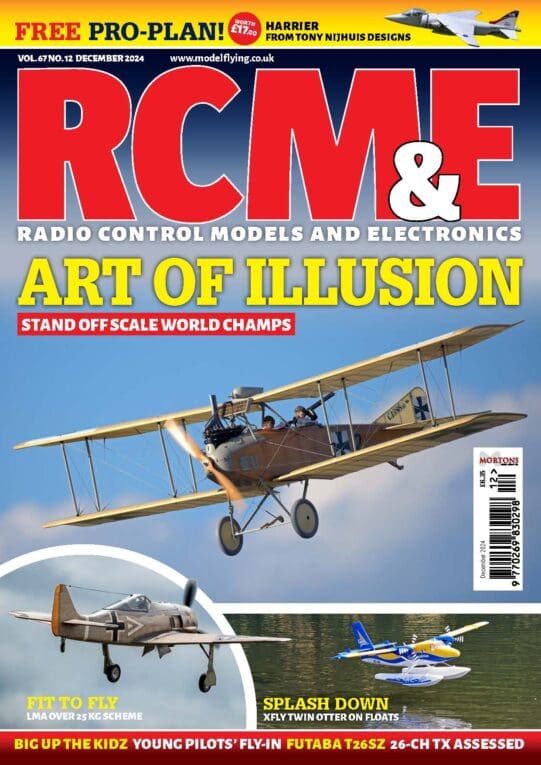1. Most standard servos come with a set of four rubber grommets, brass ferrules and fixing screws. Also included is a selection of different output arms that can be changed to suit your model’s installation requirements.

2. The rubber grommets are first fitted to the servo’s mounting lugs, after which the brass ferrules are pushed into the grommets from the underside – not the other way around!
Enjoy more RCM&E Magazine reading every month.
Click here to subscribe & save.

3. When screwing the servo to hardwood rails, note that to avoid any damage caused by engine and airframe vibration, the plastic case of the servo should not come into contact with any part of the timber.

4. The same rule about isolating the plastic case also applies when fitting the servo into a ply or composite tray. If using this mounting method, bear in mind that the ply may need to be doubled in thickness, or even trebled, at the fixing points.

5. Pilot holes should always be drilled in order to prevent the screws from splitting the wood. Screws shouldn’t protrude through the tray, for in time the sharp point could easily wear through crucial wiring.

6. Select a servo arm that best suits your need and position it on the servo. When removing and re-fitting the servo arm, hold it tightly between your finger and thumb to avoid putting strain on the gears.

7. For accurate installation the servo will need to be centred. To do this make sure the Tx trims for the channel you’re working on are set to zero. Now simply plug in the servo to its corresponding receiver channel, power up the system and the servo will move to centre.

8. The arm will usually be set at 90°, however sometimes it may need to be positioned at a different angle. When satisfied, clip any unwanted extensions to prevent unnecessary fouling with adjacent systems, then re-check the servo for centre, as in item 7.

9. Sometimes the hole in the servo arm will need to be drilled out to take your chosen control rod or quick link. While it’s important that the control rod does not bind in too tight a hole, it’s equally crucial that the hole is not over-large, thereby creating unnecessary slop.

10. Check that both the control surface and transmitter stick movement correspond. If, for example, you push the elevator stick forward and the models control surface moves up, then the control is reversed and you’ll have to change the direction using your transmitter.

11. With the servo centred and the pushrod connected, adjust the quick links so that the control surface is neutral. This should be done mechanically as opposed to using the Tx trims or end point adjustment.

12. Finally, with the servos and their respective control rods fitted, check that there’s no sign of binding at maximum deflection. It’s particularly common in small models for one servo horn to clash with another.
YOU WILL NEED:
1. A standard servo with associated fittings.
2. Small drills to create both pilot holes and, if necessary, to enlarge the holes in the servo arms to suit your pushrod ends.
3. An airframe with servo mounts fitted.
4. A screwdriver.
5. Pliers with cutters.
6. A charged transmitter and a receiver / battery pack.
DID YOU KNOW?
The small numbers (1, 2, 3, 4) moulded into the standard Futaba four prong servo arms indicate how many degrees each arm is off from 90 degrees. This allows you to accurately centre one of the four arms on the splined spigot, or correct any minute manufacturing differences from one servo to another.




